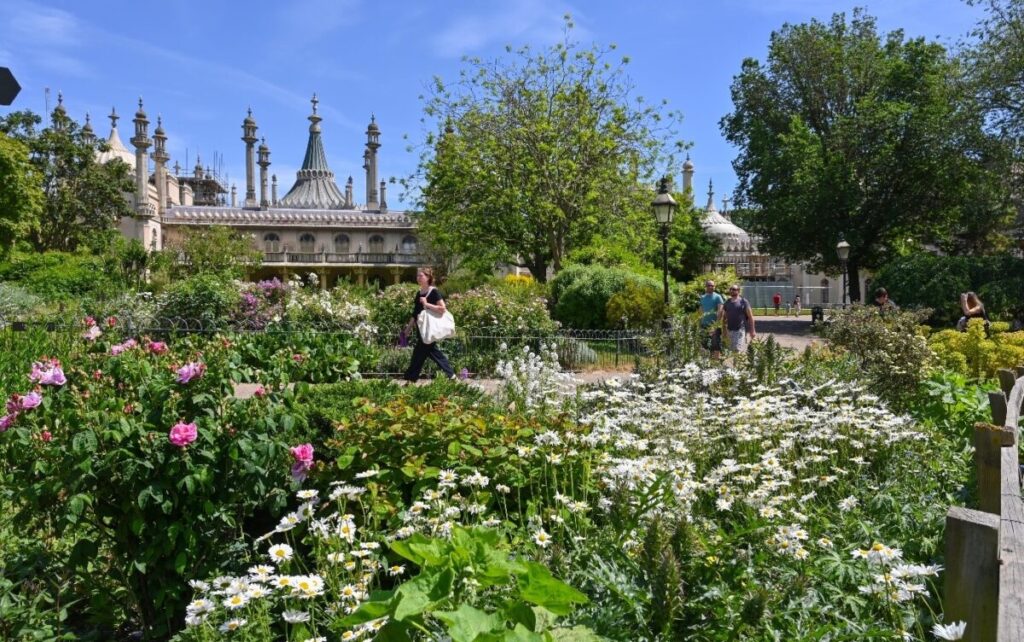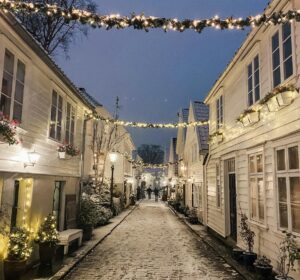The Royal Pavilion: Exotic Splendor in Brighton
Nestled in the heart of Brighton, the Royal Pavilion stands as a testament to the opulence and eccentricity of the Regency era. This architectural marvel, with its striking Indo-Saracenic style, offers visitors a glimpse into the lavish lifestyle of King George IV. Whether you’re a history buff, an architecture enthusiast, or simply looking for a unique experience, the Royal Pavilion is a must-visit destination.
What to See
As you approach the Royal Pavilion, its distinctive onion domes and minarets immediately capture your attention. The exterior is a blend of Indian and Chinese influences, a style that was quite revolutionary in early 19th-century England. Inside, the Pavilion is no less impressive. The Banqueting Room is a highlight, with its grand chandelier and intricate dragon-themed decor. The Music Room, with its gilded walls and domed ceiling, is another must-see, offering a glimpse into the entertainment style of the era.
The Pavilion Gardens surrounding the building provide a serene escape from the bustling city. These beautifully landscaped gardens are perfect for a leisurely stroll or a quiet picnic. The nearby Brighton Museum & Art Gallery, located in the Pavilion Gardens, offers additional insights into the history and culture of Brighton.
A Bit of History and Interesting Facts
The Royal Pavilion was originally built in the late 18th century as a seaside retreat for George, Prince of Wales, who later became King George IV. The Prince was known for his extravagant lifestyle and love for the arts, which is reflected in the Pavilion’s design. Architect John Nash was commissioned to transform the original modest villa into the exotic palace we see today.
One interesting fact about the Pavilion is that during World War I, it was used as a hospital for Indian soldiers. This historical tidbit adds another layer of cultural significance to the site. Additionally, the Pavilion was almost sold off in the mid-19th century, but the people of Brighton rallied to save it, and it was eventually purchased by the town.
Getting There and Tips for First-Time Visitors
The Royal Pavilion is conveniently located in the center of Brighton, making it easily accessible by various modes of transportation. If you’re traveling by train, Brighton Station is just a 10-minute walk away. For those driving, there are several parking options nearby, though it’s worth noting that parking in Brighton can be quite busy, especially during peak tourist seasons.
First-time visitors should consider purchasing a combined ticket that includes entry to the Royal Pavilion, Brighton Museum & Art Gallery, and the nearby Brighton Dome. This offers a comprehensive experience of Brighton’s cultural heritage. Audio guides are available in multiple languages, providing detailed insights into the Pavilion’s history and architecture.
Plan to spend at least a couple of hours exploring the Pavilion and its gardens. The site is wheelchair accessible, and there are facilities for visitors with disabilities. Photography is allowed inside, but be mindful of other visitors and the delicate nature of the interiors.
In summary, the Royal Pavilion is a captivating blend of history, art, and architecture. Its unique style and rich history make it a standout attraction in Brighton, offering something for everyone to enjoy.








